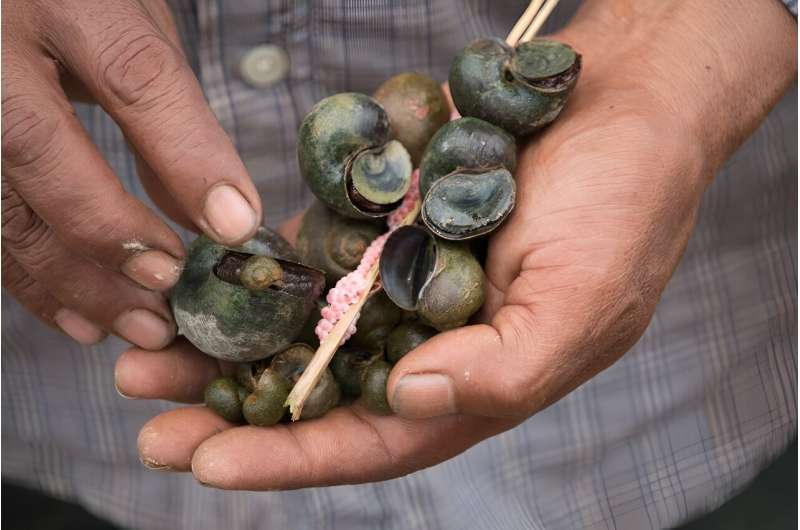Researchers have uncovered a concerning trend – the invasive Apple Snail could expand its reach across Africa, posing a grave threat to rice crops. This study, published in the journal CABI Agriculture and Bioscience, highlights the potential for the Apple Snail to infiltrate new regions, including Malawi, Madagascar, Uganda, Mozambique, Tanzania, and Ethiopia. With the pest already causing significant crop losses in Kenya, urgent action is required to mitigate its further spread and safeguard food security.

A Troubling Invasion
The Apple Snail (Pomacea canaliculata) has already invaded Kenya, first being seen in 2020 and quickly establishing itself as it infested the Mwea irrigation scheme – one of Kenya’s most impacted rice-growing areas. Over 80% of the area has been heavily infested by the pest with severe consequences.
Rice is a major crop in Kenya, the third most important after maize and wheat, and is as an important avenue to ensuring household food security and increasing farmers income. There is some hope for them with the creation of the Thiba dam in Mwea, and rice production is expected to increase but the Apple Snail is also a real danger. Earlier studies have demonstrated that this invasive can reduce crop yields by 50 percent, resulting in multi-million dollar economic impacts.
Risk of Scale
The study is led by Fernadis Makale at the regional center of CABI for Africa in Nairobi and shows that Apple Snails have a potential presence far wider than Kenya. Proposal evidence of South West along the Tana River, Western Kenya and Coastal areas colonisation by Apple Snail invasion is made from the study. Further, the pest is a serious threat in other countries within the region such as Uganda, Malawi, Madagascar, Tanzania and Mozambique.
The researchers rated the risk only ‘very low’ for Sudan, South Sudan and Somalia. This information is relevant to be provided to policymakers and agricultural authorities for developing strategies, setting priorities and planning resources adequately to control the spread of Apple Snail.
Combating the Invasion
The authors write, “Tighter quarantine measures are urgently needed to prevent the movement of this species into regions beyond Kenya.” They propose that the government of Kenya, with its various agencies such as NIA, KEPHIS and PP&FSD should work hand in hand with other stakeholders in the rice value chain to create awareness and surveillance activities.
Such measures range from physical mechanical control (e.g. hand picking) and cultural practices (alternate wetting drying of the paddy fields). The researchers also strongly advocate early warning and contingency planning to handle the risk this non-indigenous species incorgregates for our fishes. If proactive and coordinated efforts are put in place the researchers suggest that the spread of Apple Snail can be contained, ensuring food security and securing farmers livelihoods.
